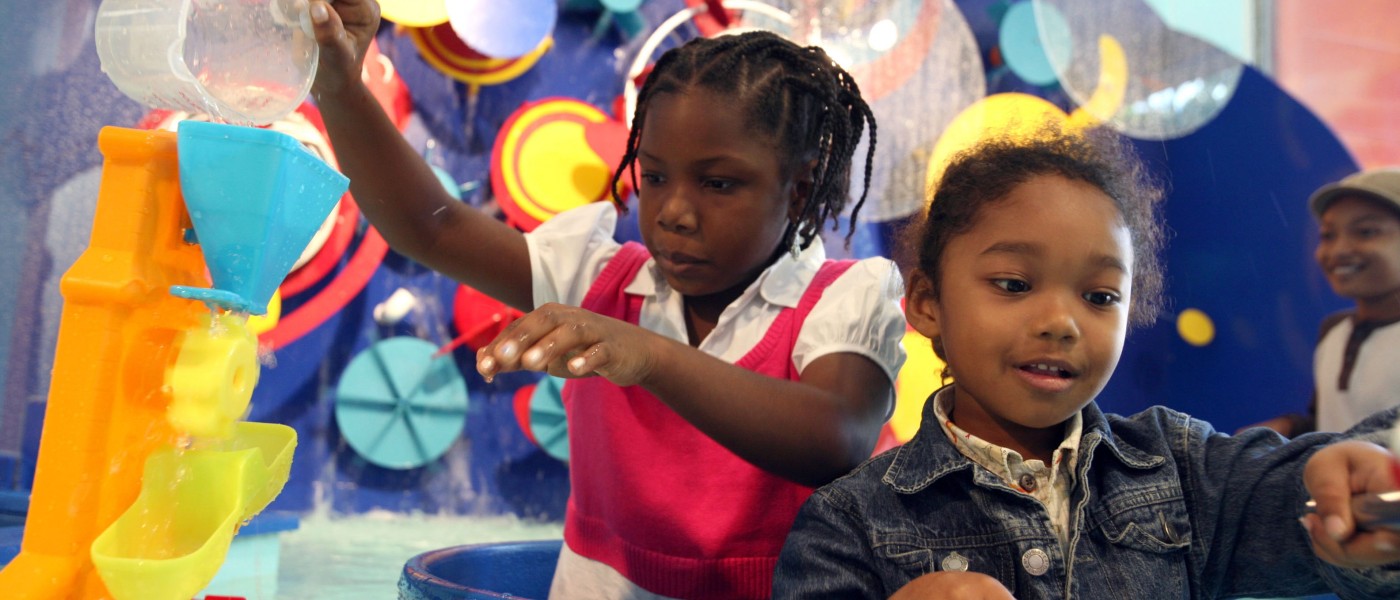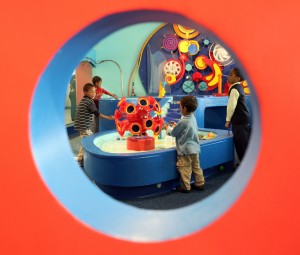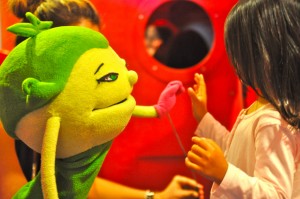Kid-friendly Museums in New York City and How to Make Them Awesome
New York City is home to a wide variety of museums—from science museums to art museums to history museums, NYC has it all. Throughout the five boroughs you can find museums where your family can explore and learn something new. Museums are fun to visit and it’s a great way to enjoy quality time together with your family. For children, visiting museums have educational benefits that go beyond the lessons they learn in school. Visiting museums with your child can help develop his language skills and build awareness of the world around him. Many kid-friendly museums in New York City offer workshops/activities and educational events where you and your child can explore and learn something new together.
Photo by Rubenstein
We checked into three well-known New York City Museums—The Children’s Museum of Manhattan, the Brooklyn Children’s Museum and the New York Hall of Science—that allow children to explore, discover and interact with hands-on exhibits that promote visual, tactile, sensory, and auditory stimulation.
Three Kid-friendly Museums in New York
The Children’s Museum of Manhattan (CMOM), located on Manhattan’s Upper West Side, is described as a “learning theme park” for kids. CMOM has a many hands-on learning exhibits, such as the PlayWorks exhibit where your child can play and learn at the same time. It’s also a great exhibit for children with disabilities[pdf]. There are many activities you can do at CMOM with your child-your child can learn the alphabet as they explore the Alphabet Garden and feed Alphie in the PlayWorks exhibit or sing and dance at interactive video music wall at the Frolic exhibit.
The Brooklyn Children’s Museum (BCM) is located in Crown Heights, Brooklyn and like CMOM, there are many hands-on exhibits that your child can explore and learn. In a previous blog post, I mentioned BCM’s Sensory Play exhibit as an ideal place for children with special needs, but BCM has many other exhibits where children of all abilities can explore, such as the Neighborhood Nature and the World Brooklyn. While visiting these exhibits with your child you can play “I spy” or have a treasure hunt. Have your child look for specific things or animals, for example if you are in the Neighborhood Nature exhibit ask your child “what animals do you see?” or “how many animals live in trees?”
New York Hall of Science (NYSCI) is located in Flushing Meadows-Corona, Queens and is “New York’s center of interactive science.” The Preschool Place at NYSCI is perfect for 6 years olds and younger. There are many multi-sensory activities that your child can do, such as learning cause and effect. The Connected Worlds exhibit is a great interactive exhibit where your child will learn about six different environments- jungle, desert, wetlands, mountain valley, reservoir and plains. No matter which exhibit you take your child to, they are guarantee to enjoy every minute of it. Let’s not forget the Science Playground and the Rocket Park Mini Golf Course which are also fun.
Starting Points for Museum Activity Ideas
Coming up with a couple ideas or activities for the kiddoes before you set foot in the building is a great way to get them excited and prepped—if they need it—for what they’re going to see and do. Set the stage for fun & exploration with museum activity ideas:
- Contextual meaning. In language, context is important and a museum that is organized and divided by different themes or time periods allows to change contexts quickly. Context gives meaning to our words and so the exhibits found within a museum will help your child to grasp meaning quickly. So, as you are going through the PlayWorks exhibit at CMOM or through the The Connected Worlds exhibit at NYSCI, describe the things they do or see. Ask your child what happens when they interact in certain exhibits – describe the sounds or the visual effects (ex: that was loud, soft etc. ) (ex: wow, it changed color/ or it disappear). Make sure that you speak slowly and and point to what you are talking about.
- Hear some new words. Even if your child can’t talk, you will still be exposing your child to new vocabulary that you normally wouldn’t come across. And after reading up on Dana Suskind’s work on the Thirty Million Words project you’ll be looking everywhere for new things to chat about.
- Hands-on learning experiences. Take advantage of hands-on museums where a child is encouraged to touch, feel, smell, run, jump, and play, your child will develop critical thinking skills, communication skills and collaboration skills. Many museums offer workshops where children can make crafts or take part in daring experiments.
- Elicit powerful emotions. Museums can elicit a wide range of emotions: wonder, awe, curiosity etc. These emotions can open pathways to learning, and get them excited and interested in a particular art piece or time period or subject. Having a play date at a museum is a fun way for your child and her friend to experience the museum together at the same development level.
Remember to let your child lead, following their lead is one of the most effective and natural ways for your child to learn.





